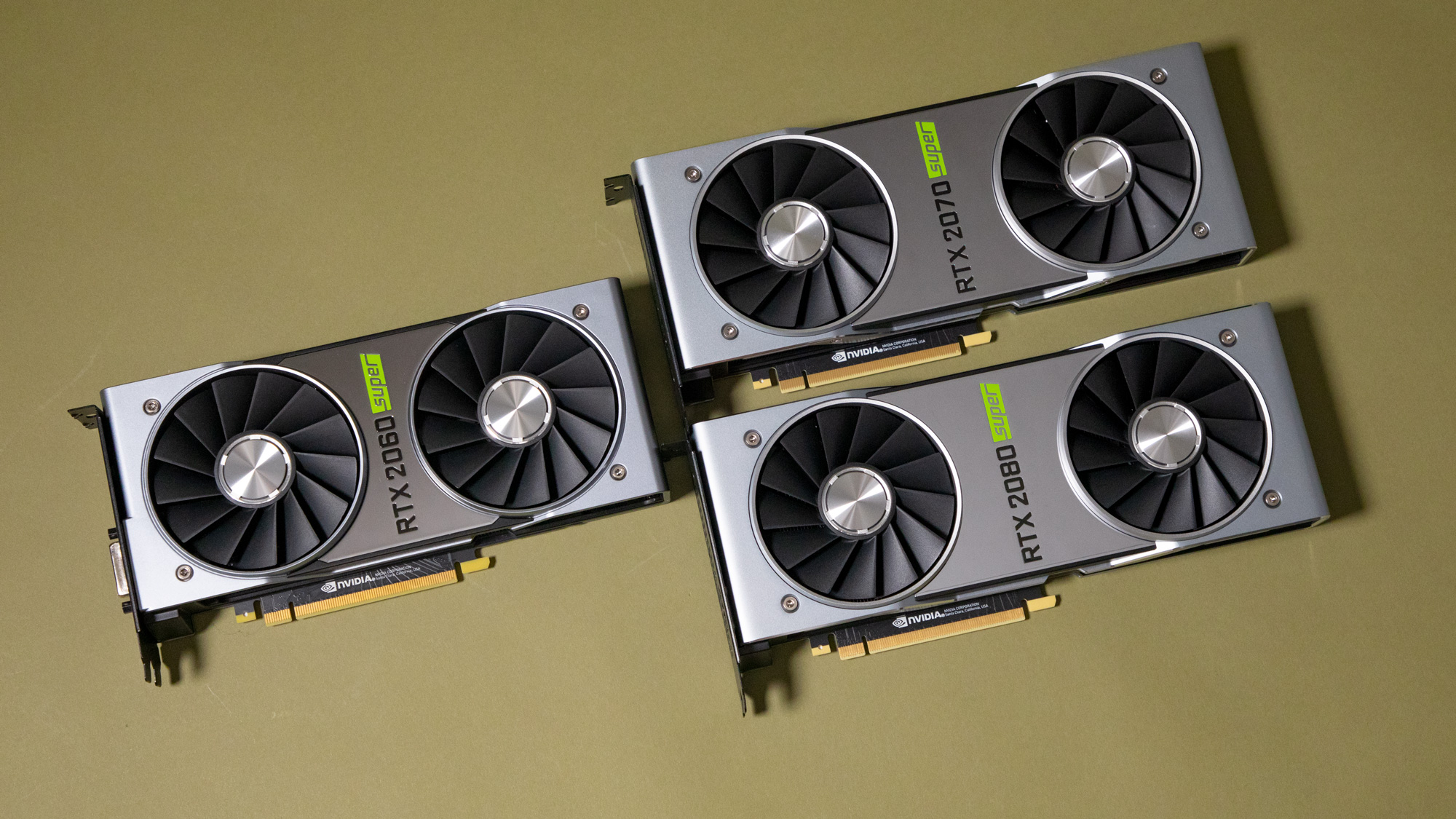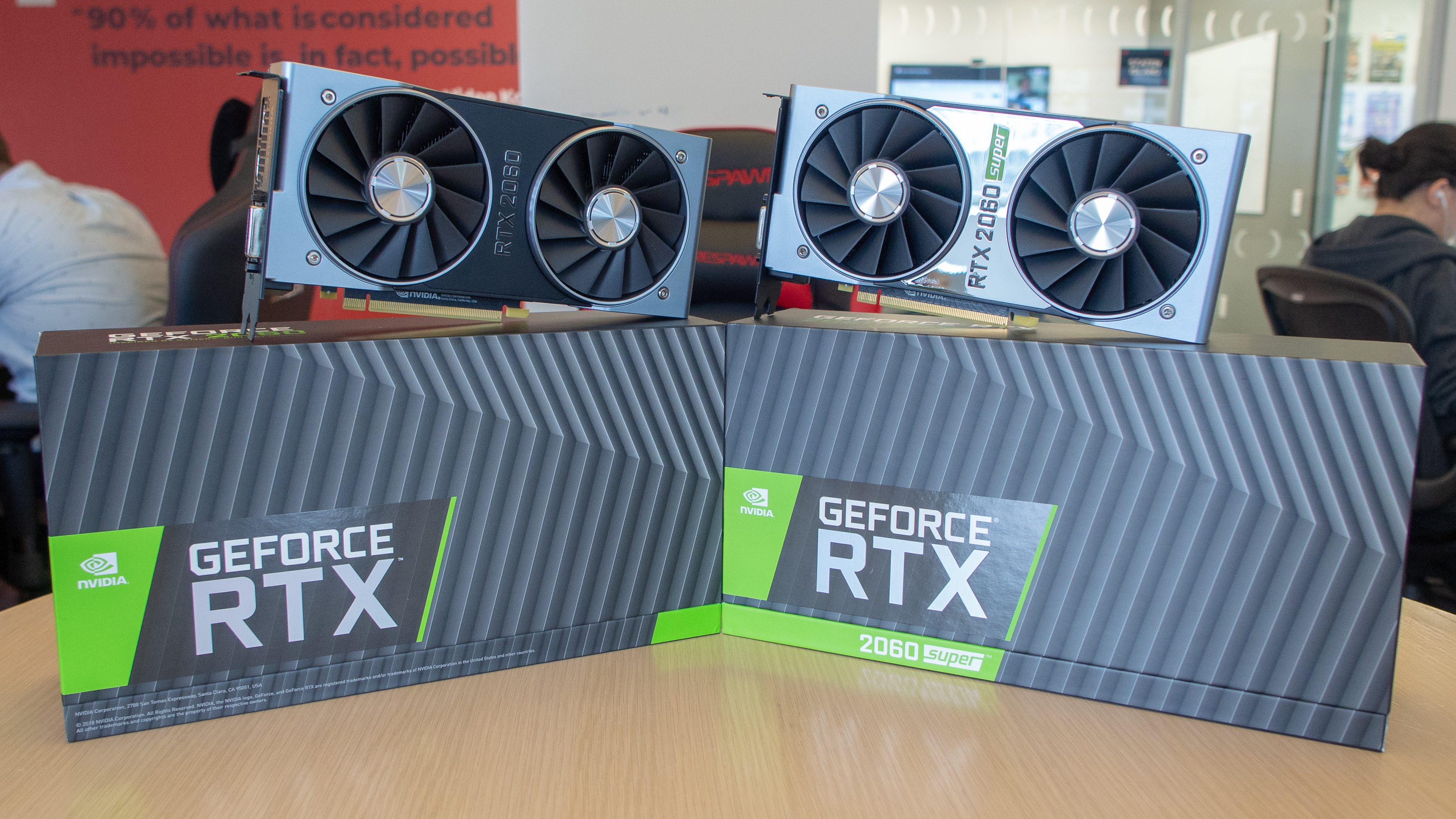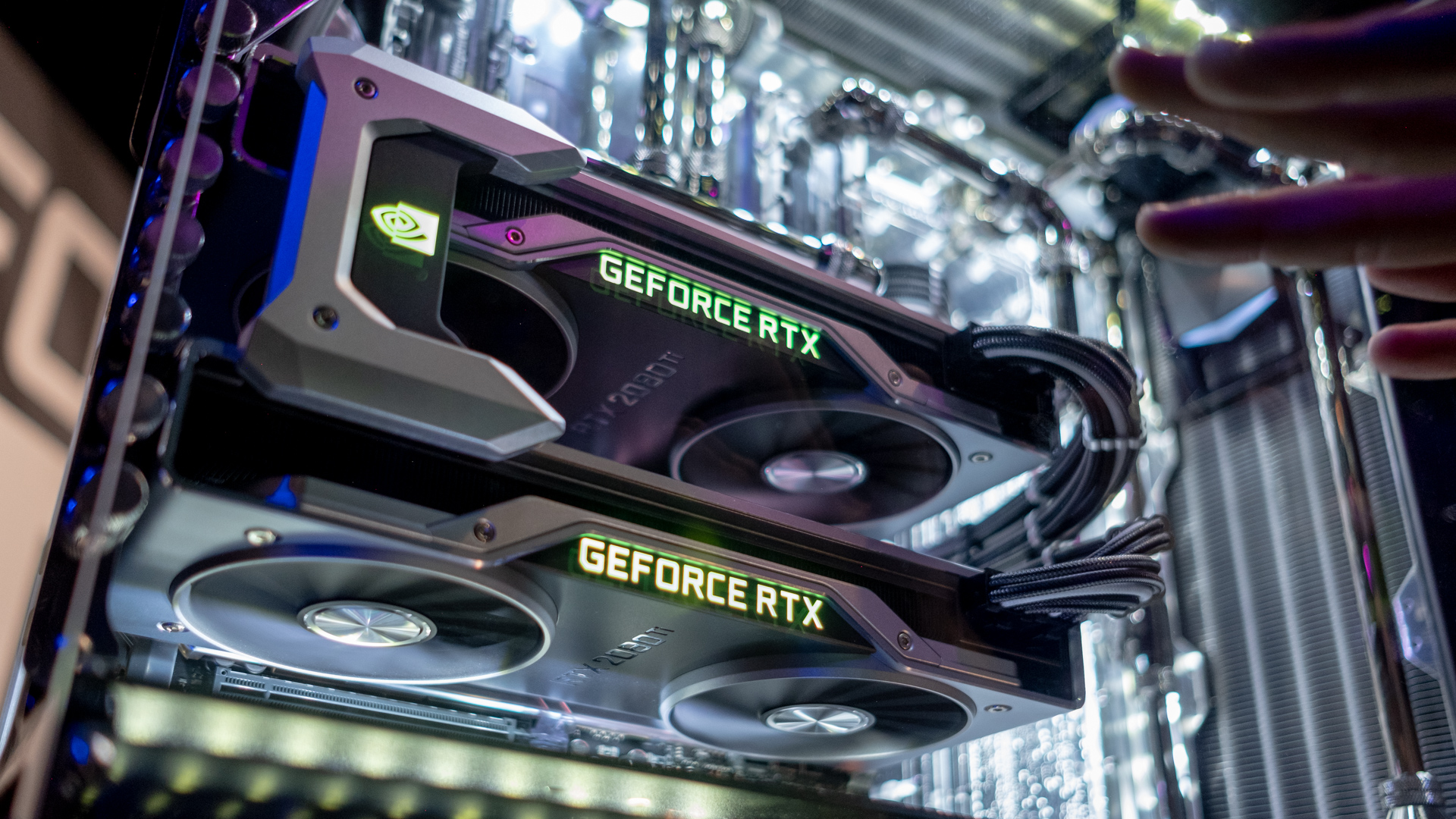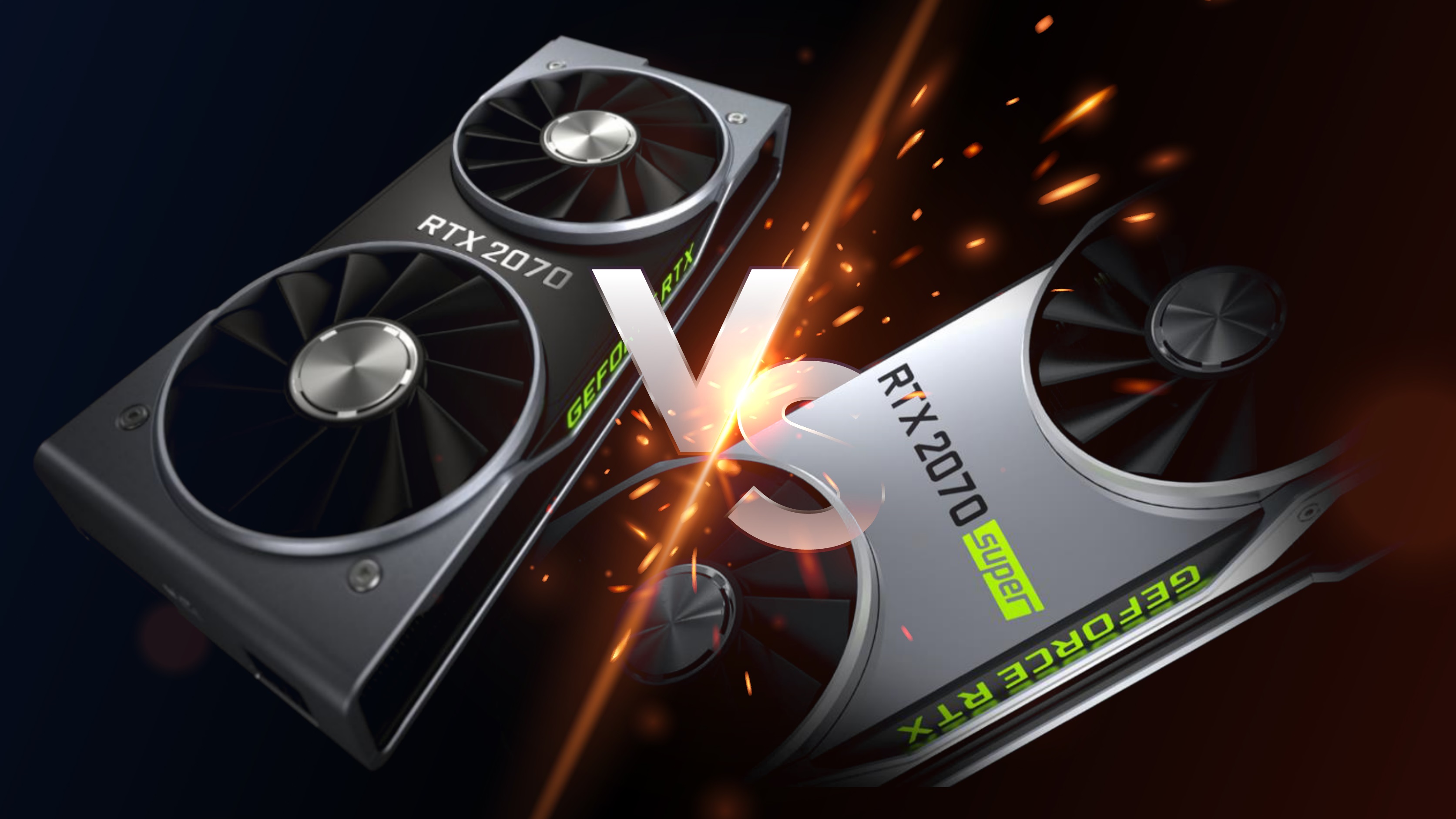The state of Nvidia Turing: is RTX worth it?
Opinion: Did Nvidia RTX Super truly supercharge GeForce?

Nvidia Turing has been around for nearly a year now, revealed back at Gamescom 2018. However, once Nvidia CEO Jensen Huang unveiled the pricing for the RTX 2080 and RTX 2080 Ti at $799 (£749, AU$1,199) and $1,199 (£1,099, AU$1,899), respectively, it felt like the price of entry was higher than ever before – because, well, it was.
And, once we got the graphics cards in our hands, while they were certainly powerful, with the Nvidia GeForce RTX 2080 Ti finally capable of powering the 4K 60 frames per second (fps) dream we've had for years, the high price tags meant they were hard to recommend.
So, now that the Nvidia GeForce RTX 2080 Super has finally arrived and the Nvidia Turing lineup is finally complete (for now), we thought it was about time to take a step back to see if Nvidia Turing is worth it for most people. Is it time you lived the rest of your life ray traced? Or, is the high price still worth holding out for something better?

Dropping all the prices
Just back in January, the cheapest way to get yourself into the RTX lineup was with the Nvidia GeForce RTX 2060, a graphics card with an aging amount of VRAM and a higher price tag than the GTX 1060 saw at launch. But, because it was so much more affordable than the next step up in the Turing ladder, the RTX 2070, it made sense for most people that wanted a taste of ray tracing to jump on it.
However, seemingly in response to the AMD Navi cards launching in early July 2019, Nvidia pushed out the RTX 2060 Super and RTX 2070 Super. And, while the latter replaced its non-Super counterpart, the RTX 2060 Super pushed the vanilla 2060 down in price, making the Founders Edition available for just $349 (£329, about AU$495).
At this price point, its finally possible for people to get a taste of RTX at what's traditionally the mid-range for a desktop graphics card.
Moreover, the RTX 2060 Super, slotting in at the $399 (about £320, AU$560) slot the vanilla 2060 came in at, makes RTX 2070-level performance cheaper than ever before. This makes high-end 1440p gaming accessible for a lower price than ever before, even if that selling point might've been soured by the AMD Radeon RX 5700 XT.
Get daily insight, inspiration and deals in your inbox
Sign up for breaking news, reviews, opinion, top tech deals, and more.
Still, in our testing the Nvidia GeForce RTX 2060 Super is more than capable of switching on those RTX effects in 1440p without subjecting yourself to a prettier-than-average slideshow when it comes to frame rate.

But, what about the high-end?
When it comes to the high-end, however, it's a different story. The Nvidia GeForce RTX 2080 Ti still rules the roost, delivering gaming performance that no other mainstream graphics card on the market can match. But, its MSRP is still a whopping $999 (about £799, AU$1,420) – and that's for reference boards. What's worse, it's not exactly easy to find an RTX 2080 Ti at that $999 (about £799, AU$1,420) price point. The closest we can find is the EVGA Black Edition at Newegg, for $1,099 (about £875, AU$1,560) – at least until you start getting into the refurb market, which we wouldn't recommend for a graphics card that can get quite hot.
Then, we now have the RTX 2080 Super launching for about $100 less than the regular RTX 2080 Founders Edition did back in September 2018. Don't get us wrong, that does make it more accessible and that's a good thing. But, compared to the RTX 2070 Super and RTX 2060 Super, each of which delivered performance improvements in the double digits over their non-Super counterparts, the RTX 2080 Super is just 4-6% faster.
So, the harsh reality of it is that, if you're looking for 4K 60 fps gameplay in the latest AAA games, you're still stuck shelling out a thousand bucks or quid for an RTX 2080 Ti, and there aren't really a lot of people willing to do that – at least compared to other sections of the market. Maybe that's why Nvidia's RTX sales were so low before the Nvidia GeForce GTX 1660 Ti and GTX 1660 launched.

What about Turing GTX?
A couple years from now when we look back on Nvidia Turing, I think we'll see the GTX 1660 Ti and GTX 1660 as the hidden saviors of this generation of graphics. These budget graphics cards, stripped of RT and Tensor Cores, are genuinely good values, especially for people who want to just play the latest games at 1080p without paying out the nose for features that only four to five games even use.
In fact, we feel like these two graphics cards are representing the entry level better than anything AMD is offering right now, which is especially surprising for anyone that's been watching the graphics card market for the last decade.
At the end of the day, the Nvidia GeForce GTX 1660 Ti and GTX 1660 are perfect options for most users. The numbers are there too – according to the July 2019 Steam Hardware Survey, 64% of gamers are still playing at 1,920 x 1,080. At that resolution, you don't need anything more powerful than the GTX 1660 Ti. Hell, that graphics card will get you through plenty of titles at 1440p.

State of Turing: what should I buy
When it comes to giving buying advice for a graphics card, one piece of wisdom will always stand above all others: consider what you're looking for. If you're content with playing your esports games at 1080p, the GTX 1660 Ti is all you'll need, while the RTX 2080 Ti is a 4K powerhouse.
But, with Nvidia Turing, especially now that the RTX Super cards are here, finding the right graphics card is a bit more convoluted. Because, now, you have to take your target resolution, the games you're playing and whether you care about ray tracing into consideration.
Right now is one of the most confusing times to jump into the graphics card market, made more confusing by the introduction of these new Super cards. Just take a look at the RTX 2080 Super – with such a small boost in power, would it not make more sense to just drop the price of the RTX 2080?
Still, there's no denying that the best graphics cards on the market are all coming from Nvidia right now. We just wish that the lineup wasn't so confusing. We've also been asking ourselves, since the initial reveal of Nvidia Super RTX graphics cards: why did Nvidia wait to release these cards until now?
The obvious answer is that AMD is finally offering real competition to the RTX 2060 and RTX 2070, but at least now it's more affordable than ever to get a glimpse into Nvidia's ray traced future.
- These are the best PC games to play with a new graphics card
Bill Thomas (Twitter) is TechRadar's computing editor. They are fat, queer and extremely online. Computers are the devil, but they just happen to be a satanist. If you need to know anything about computing components, PC gaming or the best laptop on the market, don't be afraid to drop them a line on Twitter or through email.
